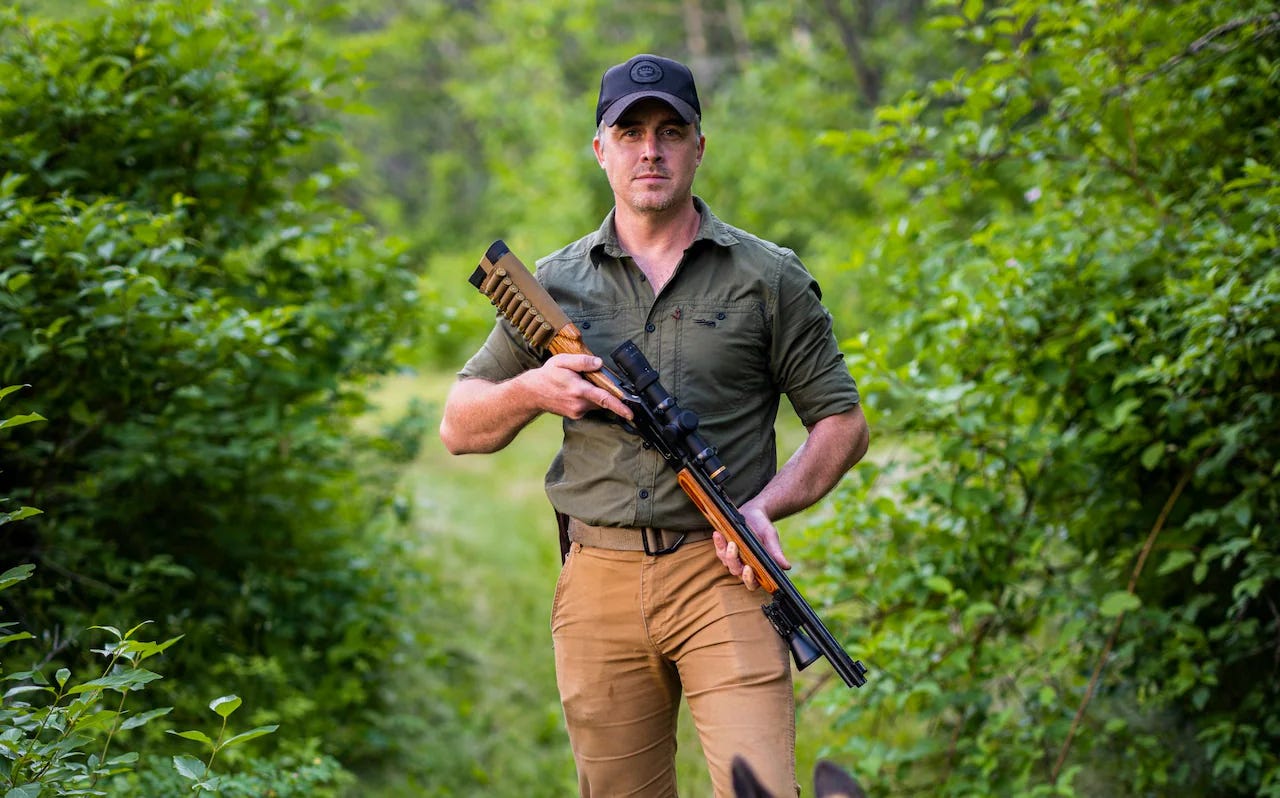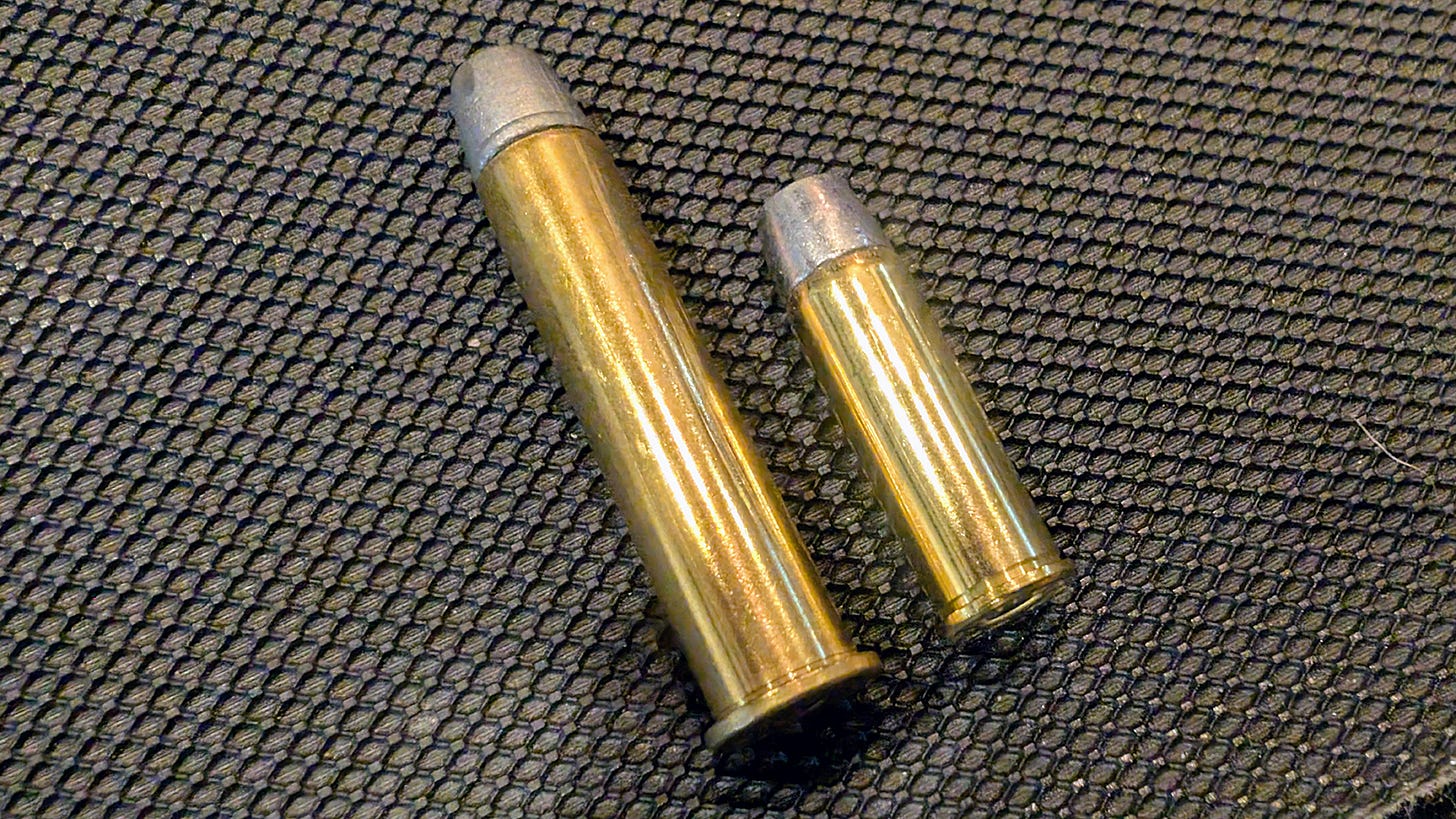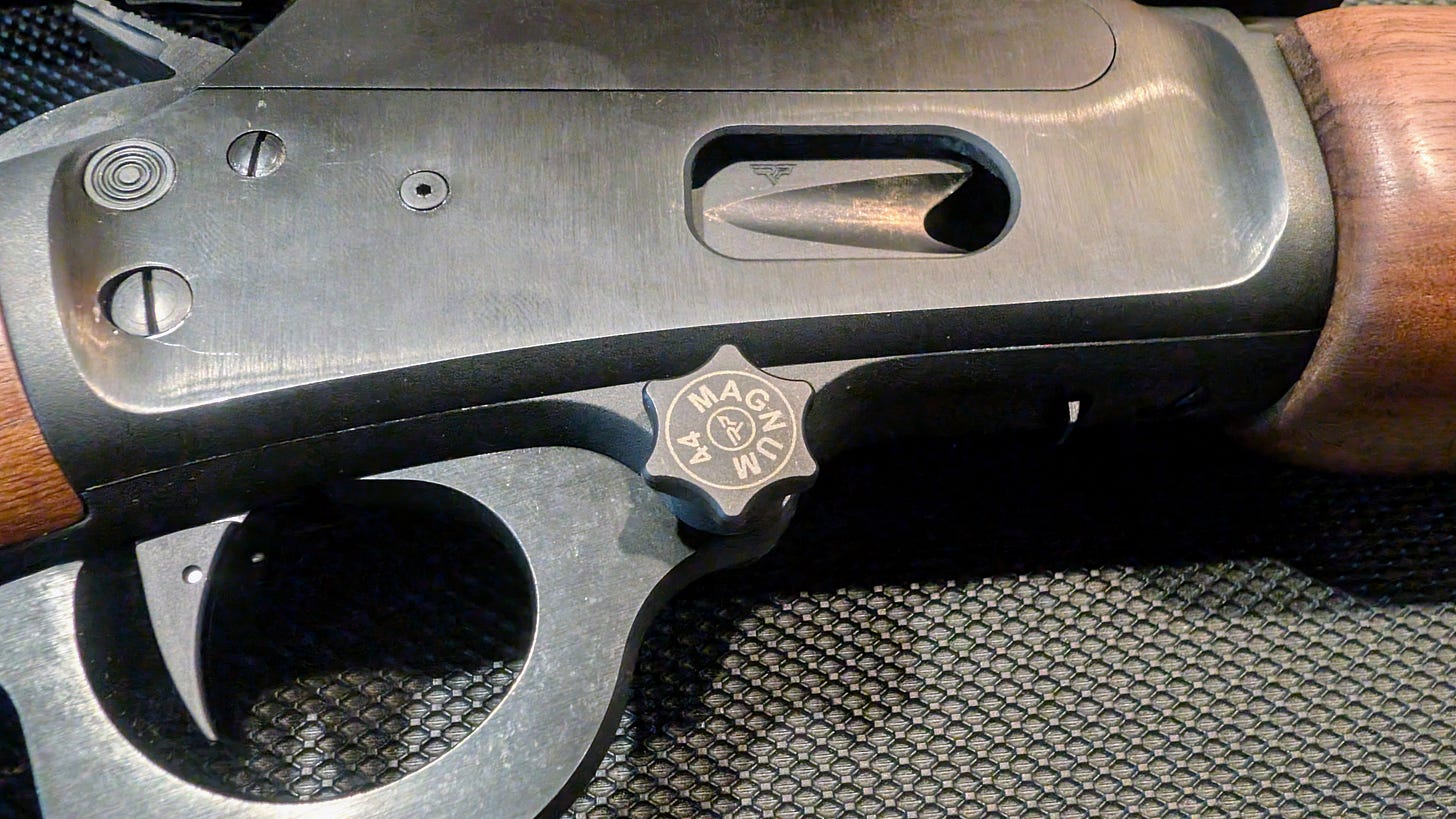How To Set Up A Lever Gun For Home Defense
Big enough for a grizzly bear, small and light and fast, it’s hard to beat a lever gun’s versatility
I just finished building my wife Virginia a Marlin 1894 in .44 Magnum for perimeter defense duty around our cabin, and during car camping trips here in the American west. Based on lessons learned from my own Marlin 1895, I think it’s an ideal combination of reliability, ease of use, handiness, and a hard-hitting caliber that should work as well on two-legged predators as it does on four. Here’s everything I learned along the way.
OMG Guns!!!1!
I get it. But the reality Virginia and I have chosen to live involves a lot of time spent in remote areas, where the only backup is going to come from each other. You can read more about my total cabin defense plan, along with the very real threats we face here, in this piece I wrote for Outdoor Life a few years back. The guns are tools of last resort, should all the rest fail.
If you are interested in preparedness, but uninterested in guns, I still use and recommend the Kimber Pepper Blaster for defense against humans. Buy half a dozen, set up a cardboard box in your yard (outside your home, away from dogs) and practice with them before you carry or rely on one. Bear spray, despite its limited efficacy, remains the second best option for defense against grizzlies.
Camping can involve similar risks. There was a gruesome murder in a national forest just outside Bozeman last year, in an area we regularly visit.
Even if you’re not interested in guns, which again is completely understandable, I hope that by writing about them away from the fear sold by right wing media outlets, I can resolve some of the mystery, and serve as a source for good information normal people can turn to. 190 million Americans live in households that own guns. Americans of all kinds are gun owners.
Virginia’s 1894 (top), next to my 1895 (bottom).
Why A Rifle?
In places with more outdoors space to defend than indoors, a shot may need to be taken at further distances than is typical for most self-defense actions. There’s also the chance that a threat may be closer to a potential victim than the armed defender.
Versus our handguns, the rifles adds distance, accuracy, and firepower. But rifles are difficult to carry, and less legally permissible in some situations. Keeping one in the cabin (or in the truck while camping) adds a lot of reassurance.
Why not a shotgun? You get the same difficult-to-carry problems you get with a rifle, combined with the same distance limitations as a handgun. And when we start talking really hot .40-caliber hard cast lead rifle loads, we start moving beyond the ballistics possible from a 12 gauge slug.
Whether the task at hand might be dealing with human threats coming at us from a distance, or the immediate surety required while handling large predators, a rifle provides the most effective possible tool for those jobs.
Why Not A Semi-Auto?
Before the advent of modern gun powders, that stuff wasn’t all that powerful. It took a lot of it to convince a lead projectile it should travel down a barrel, and fly forward at speeds sufficient both to cause the kind of damage you need a rifle to cause, and to fly flat enough you could achieve some measure of accuracy at distance. The limited power on offer dictated larger caliber projectiles and cases with more capacity than are common today.
The late 19th century also saw the westward expansion of the American frontier which, with all the genocide and extinction, brought the development of more compact rifles designed to be used from horseback, and which were capable of what, for the time, was rapid fire.
Fast forward to today, and those old lever guns are still designed to shoot larger calibers than are common in other platforms, but thanks to modern powders, those big bullets now travel much faster. That makes them very relevant to defense against large predators.
Let’s look at some ballistics. Running 430 grain Buffalo Bore hardcast loads through the 19-inch barrel on my 45-70 Guide Gun sees that bullet traveling at 1,879 feet per-second at the muzzle, carrying about 3,500 pound-feet of energy. Buffalo Bore says this should deliver five to six feet of straight-line penetration on a large bear, while creating massive amounts of hydrostatic shock to organs anywhere near that path. Maximum point blank range (the distance through which the bullet flies within 4 inches or so above and below the zero) is 150 yards, a distance at which it’s still carrying over 2,000 lb-ft.
Now let’s compare that to .308, which is the heaviest caliber commonly available in semi-automatic platforms. A 180 grain bullet in that caliber from an 18-inch barrel will be traveling at about 2,600 fps when it leaves the barrel, giving it 2,700 lb-ft of energy. MPBR is about 200 yards, at which point the bullet will be carrying less than 2,000 lb-ft. Using common expandable hunting bullets, such a load can be expected to penetrate well under 16 inches.
Having killed a very large coastal brown bear using a single 200-grain .300 Winchester Magnum round, I would feel comfortable employing .308 to hunt the smaller grizzly (which is not legal in the lower 48).
But hunting is not self defense. Even that carefully-placed shot took a few minutes to kill that bear. Even from our shooting position, 220 yards away, that created a situation in which Virginia, the guide and I feared for our safety.
I would not want to rely on any 30-caliber round for life-or-death, up-close bear defense, in which immediate results are necessary to guarantee your safety, and in which exact shot placement is not possible.
I have also experimented with various semi-automatic .308 platforms, and do not find them as comfortable to shoot as even the hottest 45-70. Given that reality dictates accurate shooting rather than the kind of spray-and-pray stuff seen in movies, I’m able to put rounds on target in approximately the same time from these lever guns.
There’s also an aesthetic concern here. We spend time with people who aren’t always super comfortable around guns, and “wood” stocked lever guns carry a lot less cultural baggage than black rifles. Considering a total security picture, it is part of the job to help people feel safe, and these guns accomplish that a little more easily for some guests.
45-70 (left) next to .44 Magnum (right).
Why an 1894?
At 7.4 pounds before bolting the light, the scope, the scope mount, and filling up the magazine and spare ammo sleeve with lead, Virginia finds my rifle a little heavy to shoulder comfortably.
The 1894C (it has an 18.5-inch barrel) is a full pound lighter on its own. I also tried to avoid adding as much weigh to it, more on that in a bit.
We’re running 305 grain Buffalo Bore through Virginia’s 1894. That exits the 18.5-inch barrel at 1,790 feet per-second, carrying about 2,000 lb-ft of energy. MPBR is about 100 yards, at which range it’s carrying 1,300 lb-ft. It’s said to be good for three or more feet of penetration in a bear.
This isn’t quite as sure a result as my 45-70, but still offers significantly superior penetration compared to something like a .308. All from a lightweight gun that can be kept on target while rounds are cycled into the chamber.
Another advantage of lever guns is the wide variety of loads available for calibers they’re chambered in. While the rounds we run up here prioritize penetration, and would be a bad choice for use in civilization as a result, we could easily swap to mild hollow points in either rifle, which would remain very effective for self-defense, but avoid over-penetration through exterior and interior walls. The 1894 is also available in .357, which would make it an even milder option that’d remain effective for critters like black bears and pigs.
And that’s another argument for levers over semi-autos: if you want to run a different load, just fill the magazine with it. No matter the bullet shape, weight, or amount of powder used, your right hand will cycle it just fine. Obviously you need to verify this before relying on it, but within maximum self defense distances (say 100 yards), it’s unlikely that point of impact will shift much, so you may not even need to re-zero as you switch from bear loads to hollow points.
What about recoil? With all that weight, the 1895 delivers a more of a very firm shove than a hard kick, even when firing those 430 grain loads. The lighter 1894 does get a bit uncomfortable after a 10-round tube of the snappier 305-grain .44s, but is still easy to manage during the kind of round counts that would occur during a defensive shooting.
The loading gate enables you to use the magazine as the gun’s designers intended, while the lever takedown finger screw means you can clear a jam without tools. Also note the replacement trigger, which reduces pull to 3 lbs.
What’s Wrong With Them?
Keep reading with a 7-day free trial
Subscribe to Wes Siler’s Newsletter to keep reading this post and get 7 days of free access to the full post archives.





